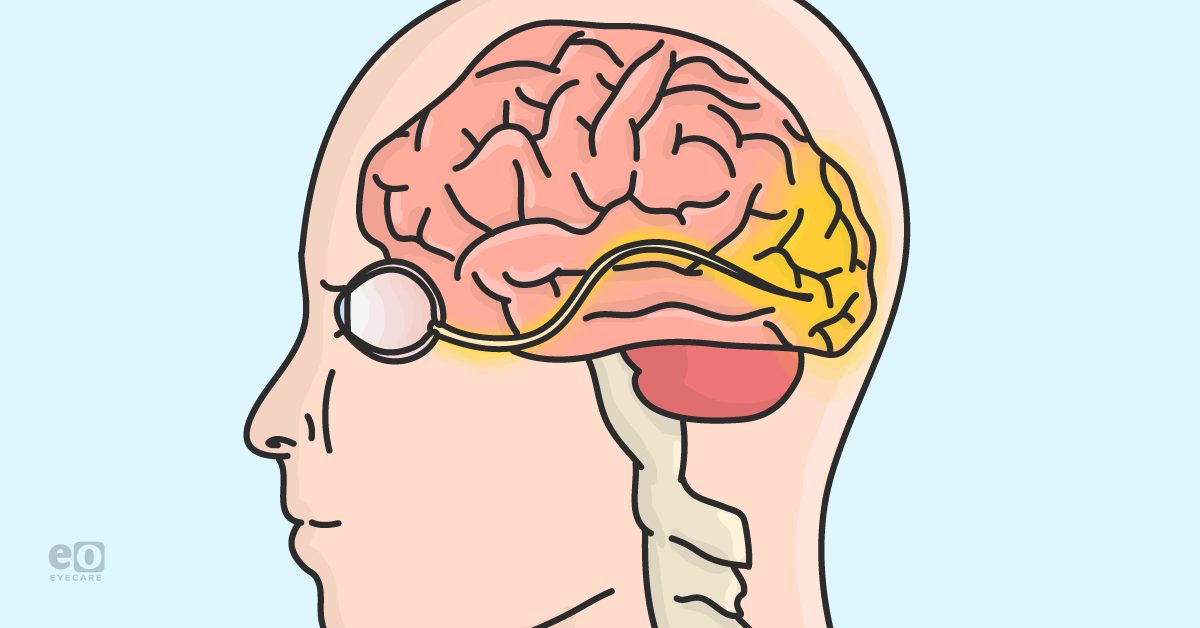Have you seen patients in your clinic that you have been unable to help? A comprehensive eye exam with binocularity testing fails to address their symptoms of headaches, dizziness or post-concussion symptoms.
Vertical heterophoria is not what you were taught
Vertical heterophoria is the vertical misalignment of either one eye or two eyes when at rest. One eye will deviate vertically when fusion is interrupted, and the patient is unable to maintain single vision. The traditional form of VH is the monocular form—
superior oblique palsy—and is a malfunction of the visual system.
In the traditional form of VH, CN4 and/or the superior oblique are weak resulting in upward gaze. This is a problem of the visual system; the vestibular system is not involved. The solution is a prism over the affected eye.
New research has identified a binocular form, which is caused by faulty alignment signals from the
vestibular system via the vestibular ocular reflex (VOR).
The visual system responds to the imminent diplopia by realigning the images. The faulty vestibular signal again asserts itself, which sets up a
misalignment/realignment cycle, which occurs at a rapid frequency and is the cause of patient symptoms. Microprisms over both eyes break the cycle.
The prevalence of
vertical heterophoria in the general population is estimated at 7% to 52% with the best estimate at 20%.
10Age or refractive error does not affect vertical phoria.
Symptoms of a vertical heterophoria
Studies show that correction of small vertical heterophorias can reduce headaches, dizziness, and anxiety. Symptoms typically occur with 2D or less of vertical misalignment.
Signs and symptoms can be quite diverse and include asthenopia and reading impairment, but surprisingly do not routinely include diplopia, shadowed/overlapping vision (only about 30%).
Symptoms of vertical heterophoria may be the result of congenital misalignment or acquired injury. The most common symptoms of vertical heterophoria include:
- Dizziness
- Anxiety
- Motion Sickness
- Headaches
- Eyestrain
- Nausea
- Light Sensitivity
- Neck Pain
- Gait Instability
- Post-concussion symptoms
- Reading/Learning impairment
How does an optometrist screen for a vertical heterophoria?
In the past, we have been unable to screen for, identify, and treat a vertical heterophoria for
3 reasons: limitations of existing tests, patient presentation with non-visual symptoms, and a lack of proper screening methods.
1. Limitations of existing testing methods
Associated and dissociated phoria tests do not consistently measure small vertical phoria misalignments <2D. Testing results are both inconsistent and consensus is lacking on how to prescribe based on testing results. At best, vertical testing is only accurate 50% of the time.
2. Non-visual symptoms
Most vertical phoria symptoms are not visual in nature. Patients will normally seek treatment from other medical doctors.
3. Lack of screening methods
Prior screening tests only examined subsets of symptoms. The Convergence Insufficiency Symptoms Survey (CISS) looks at near symptoms such as reading and visual fatigue challenges, but does not query distance symptoms, or nausea, motion sickness or anxiety.
Screening tests for vertical heterophoria
1. The Binocular Vision Dysfunction Questionnaire (BVDQ)
The BVDQ is used by a doctor to screen for vertical heterophoria. This
survey instrument has been validated to identify those who 1) most likely have vertical heterophoria and would benefit from treatment; 2) track the patient ‘s response to treatment. The questionnaire can be found at the NeuroVisual Medicine Institute’s
website.
The 5-minute cover test alerts the patient that they may have a
binocular vision dysfunction. The test begins with a patient grading their major symptoms on a 0-10 scale. Patients are then asked which shoulder they are more comfortable leaning towards. This determines the higher eye. This eye should be covered for 5 minutes while relaxing and staring at a blank wall. After 5 minutes, the patient’s symptoms are reassessed, and if the number value of symptoms decreases by at least a third, they would benefit from a NeuroVisual
evaluation.
3. Near Point of Discomfort (NPD):
The NPD is like the NPC but with alternate directions. Patients are told to stop the fixation stick when they feel discomfort (nausea, dizziness, headache) or if they experience blurry or double vision.
4. Detailed case history
A
detailed history and observation of the patient included 6 clinical findings: vertical orbital asymmetry, furrowed brow, head tilt, pain of trapezius muscle, gait instability and balance impairment, and worsening symptoms with provocative vestibular tests.
How do I help a patient with a vertical heterophoria?
After screening for a vertical heterophoria, the patient undergoes a complete evaluation and testing to diagnose and treat their binocular vision dysfunction.
Upon the completion of testing, patients will trial microprism added in small 0.25 increments in the office until visual clarity is maximized and symptoms are minimized. Gait and balance testing and symptom re-assessment should be repeated to verify the amount of microprism.
The expectation is that there will be an immediate
50% reduction of their symptoms. Spectacle lenses will be ordered with the specified microprism. This prescription is rarely the final prescription due to tension in the visual system. A progress exam should be conducted 2-4 weeks after glasses are dispensed to assess the patient’s “progressive relaxation.” Changes in baseline prescription and microprism can be expected.
How do I implement vertical heterophoria testing and treatment in my practice?
NeuroVisual Medicine is a unique optometry niche to implement into your private practice if you are tired of day-to-day refractive optometry. The
NeuroVisual Medicine Institute will provide you with the tools and techniques to apply the science to your practice.
20% of the general population is estimated to have a vertical phoria, and optometry as a profession has failed to meet their needs. Many times, patients are incorrectly diagnosed with other disorders like migraines, ADHD, learning disabilities, or anxiety disorders. By incorporating the BVDQ and vertical heterophoria testing into your practice, you can help patients who cannot be treated by other optometrists, ENTs, or medical doctors.
